DOWN RIVER INTO A MANUFACTURED LANDSCAPE
3/3 on Tibet becoming a pumped hydro battery
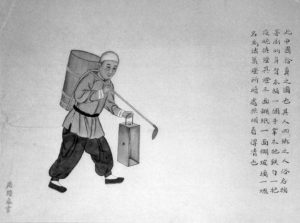
Credit: Wellcome Library, London.
We follow the Gormo/Golmud river down. Having captured both of the rivers upstream and cut through the mountains, it descends below the pass into an altogether different world of gravel and sand, relentless winds, oil and gas wells and a full-scale petrochemical industry hungry for water.
As one might expect of a river system originating in high mountains recently uplifted, lots of minerals are exposed to air and water, and are carried by the river, accumulating thickly on the bed of the dry lake.
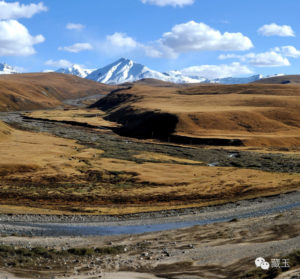
Despite the constraints imposed by water availability, the most industrialised area in Tibet grew rapidly in the 1960s. Not only was there oil to be extracted from drilling, there was the potash salts of the Qarhan lake. For the central planners, that was a winning combination, well worth the cost of a rail line out into the desert. The common salt found in the Tsaidam salt lakes, and the oil, could together make polyvinyl chloride plastic. The natural gas found later could be used to make methane, then ammonia, then urea fertiliser. That meant the Tsaidam Basin on its isolated own could make the N and K of the NPK chemical fertiliser combination needed for farming all over China. The potassium-rich Qarhan lake was the greatest prize, a seemingly endless source of potash, in the periodic table of elements its symbol is K.
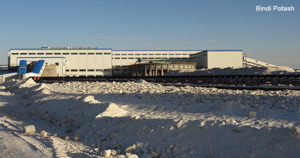
An entire chemical industry, located in Gormo and distant Lanzhou, was built on that premise. Scientists dug into the Qarhan salts and found potassium salts all the way down. Tibet was living up to its promise as a treasure house.
AN ENDLESS SUPPLY OF POTASH?
Five decades later, it is now starting to look somewhat precarious. Climate change means more rain. In an arid climate that should be a good thing, but Gormo was built up, from a Mongol camel stop into a chemical industrial complex without anyone imagining it could one day become swampy and waterlogged. That is now happening. In 2021, flood waters poured into a nearby mine shaft, killing several miners. The outskirts of Gormo house many Tibetan nomads relocated far from their pastures.
The Qarhan is mostly playa, a hard crust of dried mud rich in minerals, easily scooped up by earth moving machines and dumped into trucks, with only a few corners under water. While nowhere near as big as the past lake lapping Gormo, this is China’s major potash find. The Qarhan length from west to east is about 168 km and the extent from north to south is 20–40 km, covering an area is about 5856 sq kms of potash.
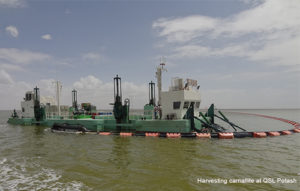
Not any longer. Qarhan lake is again becoming a lake. Extracting the salts and evaporating away the water is becoming more complex.
But the biggest change is that after five decades of extraction, the potash supply is running out, Qarhan is getting close to exhaustion. There is no technical fix for that. According to the Qinghai Statistical Yearbook potash fertiliser production peaked in 2016, at 8.88 million tons, but by 2018 had declined to 7.13 million tons, reversing a trend of steady growth over several decades.[1] Of the 67 Qinghai enterprises manufacturing raw chemical materials, 26 made losses. Overall profit across all chemical manufacturers in Qinghai was RMB 2.29 bn, but the total losses of the loss-makers was RMB 1.33 bn.
THE GREAT POTASH LEAP FORWARD
The importance of the Tsaidam, and specifically this one lake, for the agricultural intensification of the whole of China is remarkable. China’s revolutionary program of modernising its industries relied on the Great Leap Forward plan to rapidly increase crop production, which relied crucially on chemical fertilisers that included potash in proportion to the other elements essential to soil productivity. Only if farms produced more could the regime tax the peasant farmers hard enough to pay for industrialisation and militarisation.
It was in 1958, as Mao demanded a Great Leap Forward on all fronts, that production of potash from Qarhan Lake began. That was the year of the most decisive and final defeats of the Tibetan war of resistance to China’s invasion.
China’s reliance on Qarhan is told authoritatively in 2002 by Zhu Xun, in a volume of 776 pages, Mineral Facts of China, a frank and thorough account of China’s mineral strengths and weaknesses at the time China was joining the World Trade Organisation, with an expectation that foreign miners might invest money and technology in China’s mineral production, but only if they had access to reliable data. The 2002 volume is a condensation of a 1999 Chinese three-volume set.
TIBET: THE INDISPENSABLE POTASH NATION
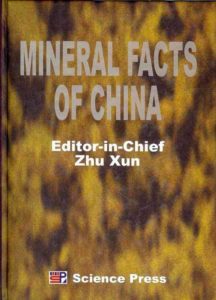 In the chapter on potash Zhu Xun is blunt. Potash “is one of the three indispensable fertilisers. Before the 1950s there was no potash industry in China and the soil fertility was maintained by farm manure. In the late 1950s China found the liquid potassium-magnesium salt mining area in the Qarhan Playa, Qinghai. Now an integrated mineral and fertiliser complex of liquid potassium-magnesium salt has been established in the Qarhan Playa and a potash production base has been formed there. The soluble potash reserves demonstrated in China are not large and cannot meet the present enormous demands of agriculture for fertiliser. Therefore, potash is one of China’s urgently needed mineral resources.”[2]
In the chapter on potash Zhu Xun is blunt. Potash “is one of the three indispensable fertilisers. Before the 1950s there was no potash industry in China and the soil fertility was maintained by farm manure. In the late 1950s China found the liquid potassium-magnesium salt mining area in the Qarhan Playa, Qinghai. Now an integrated mineral and fertiliser complex of liquid potassium-magnesium salt has been established in the Qarhan Playa and a potash production base has been formed there. The soluble potash reserves demonstrated in China are not large and cannot meet the present enormous demands of agriculture for fertiliser. Therefore, potash is one of China’s urgently needed mineral resources.”[2]

Zhu Xun explains China does have deposits of insoluble rock potassium, a much more expensive and technically complex possibility; and plenty of imports from Canada, Russia and Byelorussia. Two decades later, in 2022, the situation is much the same. Extracting potassium from rock is expensive, Canadian imports are plentiful. Soluble potash brought down from the mountains by rivers, deposited into a flat salt-lake bed is so much easier. China has found many treasures in Tibet, none as critical as potash.
Zhu Xun: “China’s potash resources are rather deficient and distributed very unevenly. Brines from salt lakes and underground brines also contain large amounts of magnesium, sodium, boron, lithium, bromine, iodine, rubidium and caesium besides potassium. The potash salts are shallow buried. They are easy to mine. China began to produce potash at the end of the 1950s. The Qinghai Potash Fertiliser Plant is China’s largest potash fertiliser production base.
“The situation of supply and demand of potash fertiliser in China is very stern. Production falls far short of the demand and a large amount of potash fertiliser needs to be imported each year to meet the demand of China’s agriculture. Because of the limitation by resource conditions and other causes, the situation of the supply and demand of potash fertiliser in China cannot be optimistic. The demand for potash fertiliser goes up year by year; so the supply and demand contradiction becomes sharp steadily and the gap become larger and larger.”
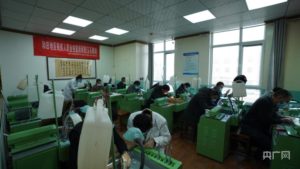
The potash applied to China’s corn, wheat, rice, tobacco, fruits and vegetable crops is purified just sufficiently to benefit plants, not harm. Plants need, and can use, small amounts of the other metals mixed in with the potassium of Qarhan.
CHINA’S NEW SALT LAKE BONANZA
What has however changed since Zhu Xun’s official assessment was published in 2002 is that China is in many ways decoupling from reliance on overseas sources of raw materials, and talks much of the need for self-reliance.
The other big change is that the other salts mixed in with the potash, especially magnesium and lithium, are now valuable as never before, integral to new energy solar power and batteries.
Now in 2022 lithium and magnesium are no longer contaminants, to be largely but not highly purified. Now they are in great demand, as never before, and require very high levels of purification. Even the slightest impurity in a lithium battery can cause it to overheat, cease to work well, even catch fire.
As potash production is in decline, magnesium and lithium have taken over as the high profit minerals extracted not only from Qarhan but many Tibetan salt lakes.
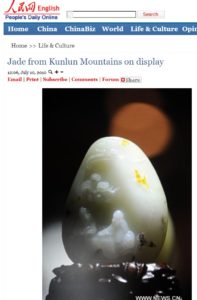
PUMPED PRECARITY
Will the planned Nanshankou pumped hydro battery dam impact the river below, and its steady delivery of metal salts to the industries of Gormo? The Golmud River, like any river that enters a desert, is precarious, and runs out. Turning it into a battery storing solar generated energy for release in peak demand hours makes it more precarious, more prone to sudden surges and absences. Definitely not good for fish.
The German pilgrim to Tibet in the 1940s, Anagarika Govinda, tells a story of camping in a dry creek bed, only to be washed out in the middle of the night by a rush of water. What had never occurred to him was that strong sunlight by day, on the glaciers above, would melt enough ice to make the creek run, and that it would take several hours to reach the plains below, arriving at night. Who knew?
Man-made, engineered pulsing is different, triggered by big data monitoring of electricity demand a thousand kms away, often more, in distant cities with their pulsing mass transit and industrial demand for immediate electricity supply. Making Tibetan rivers obey urban rhythms is an entirely new form of colonialism, never imagined before.
CLEAN GREEN SOLAR?
The promise of the new energy revolution -mostly solar and wind power- is that unlike coal it is clean and green, even though there are considerable environmental costs in building and transmitting the power they generate. That is why China is turning to the wide landscapes of sunlit Tibet to construct solar panel arrays on a massive scale. The technology to scale up solar power now exists, and the landscapes of Tibet, often emptied of customary landscape users, provide ample space for scaling up.
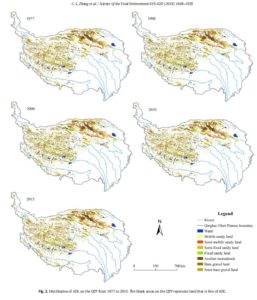
What limits China’s adoption of solar and wind power, in fulfilment of its climate pledges, is politics, specifically the contradictions, within the state, between provincial and national power. At a national level, China is now on the path to reducing emissions, eventually by 2060 becoming carbon neutral At a provincial level, however, governments own, regulate and profit from the coal fired power stations under their control, many of them quite new, and they are reluctant to plug in to electricity transmitted from Tibet, coming from solar and wind farms. Routinely, a high proportion of the electricity generated in Tibet is wasted, the official euphemism is that it is abandoned, or used as the cheapest of all electricity for energy intensive purposes such as bitcoin mining, and aluminium smelting. Both of these industries in recent times relocated to Sichuan and Yunnan to be as close as possible to the hydro dams in Kham and below, to avail of cheap electricity that otherwise would be “abandoned”.
Provincial vested interests argue that coal is reliable, solar and wind power are unreliable. The solution, as usual a tech solution, is pumped hydro.
The size of the solar arrays installed in the Tsaidam Basin is staggering. So much empty land.so much sun, also so much wind blowing in from Xinjiang. The only catch is Tsaidam sunshine doesn’t coincide with Shanghai rush hour, and all the lithium in the world could not build a battery big enough to hold the electricity generated in Tibet, until Shanghai wants it, right now.

For the engineers, the case for the Nanshankou pumped hydro battery dam is the obvious answer, in a country often ruled by engineers, where a technical solution is usually the answer, whatever the problem.
However, there is a wider picture, which this blog has explored. Maybe the Nanshankou pumped hydro dam will not happen.
CHINA WANTS IT ALL
But China wants so much from Tibet: the water, potash, magnesium, lithium, hydro-electricity, sunny lands for solar farms, windy uplands for wind farms, copper for the power grids networking them all, and much more. China wants it all, and more. Recently, a deposit of cobalt and gold was drilled and mapped by Chinese geologists, jest to the east of the jade.[3]
One day, China may discover the regenerative agriculture movement that is sweeping farmland worldwide, which emphasises cutting back on chemical fertiliser, instead using crop residues to maintain soil fertility without chemicals, especially potash.
That day is a long way off. Right now China, in the name of “rural revitalisation” is scaling up the consolidation of farmland into huge agribusiness monocrop scale, which means mechanised, capital-intensive maximisation of production, depleting soils that are made to produce yet another crop by application of NPK chemicals, potash included. China is not embracing regenerative eco-agriculture, that looks after the soil; it is moving further from it, and from sustainability.
The contradictions are becoming more acute. China can no longer extract from Tibet all the water it wants, and potash, and jade. It can no longer bank on a dividend of extra runoff into the rivers, from melting glaciers, and keep the Gormo mines, industries and lakes dry enough for maximum extraction. Scarcity is back.
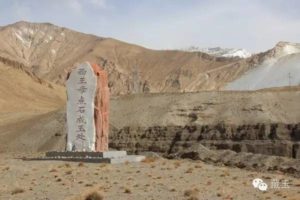
[1] Qinghai Statistical Yearbook 2019, table 13-18
[2] Zhu Xun ed., Mineral Facts of China, Science Press, Beijing, 2002, Potash chapter 4.9, 584-590
[3] Chengyou Feng et al., Re–Os dating of pyrite from the Tuolugou stratabound Co(Au) deposit, eastern Kunlun Orogenic Belt, northwestern China, Ore Geology Reviews 36 (2009) 213–220
